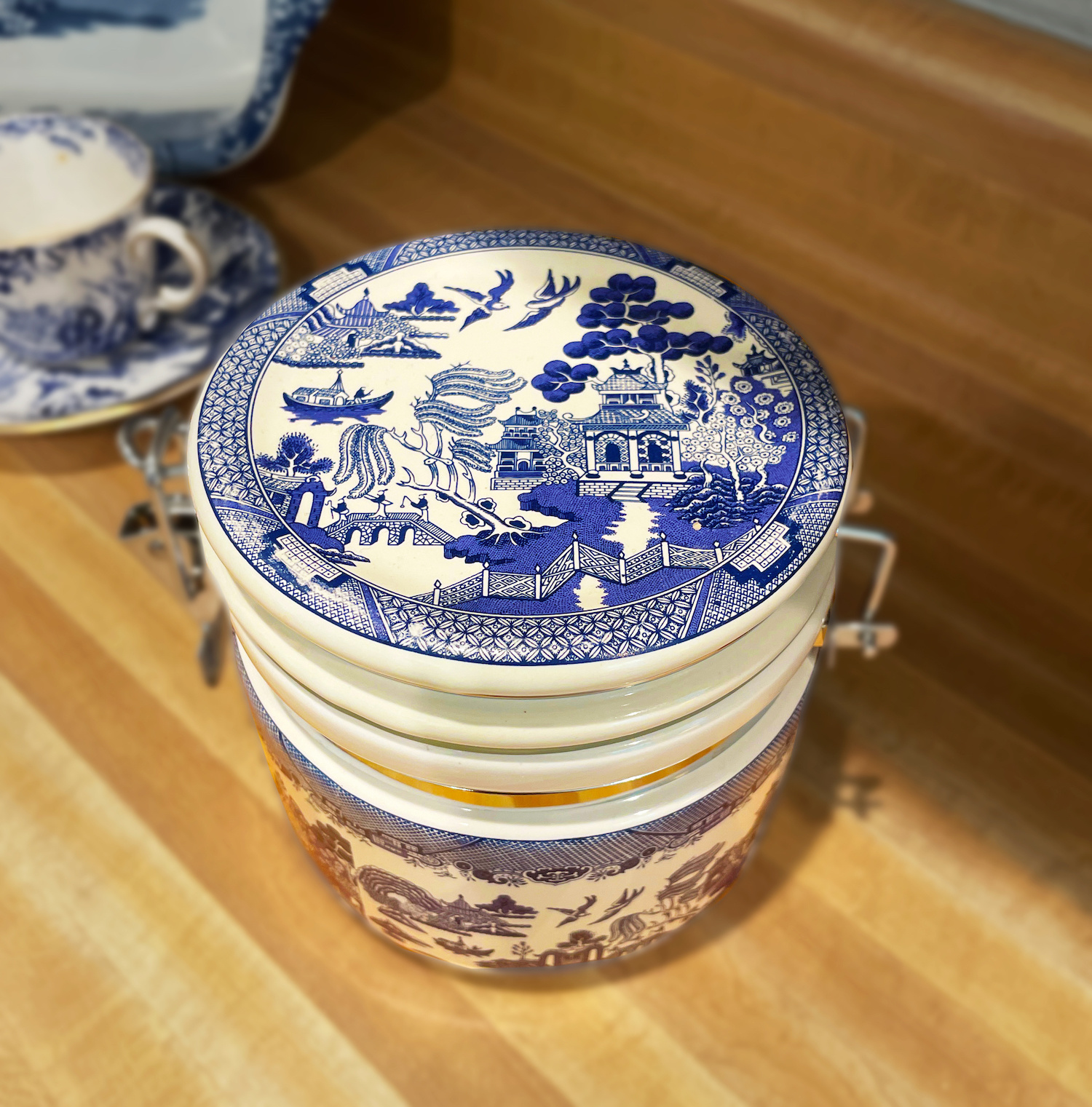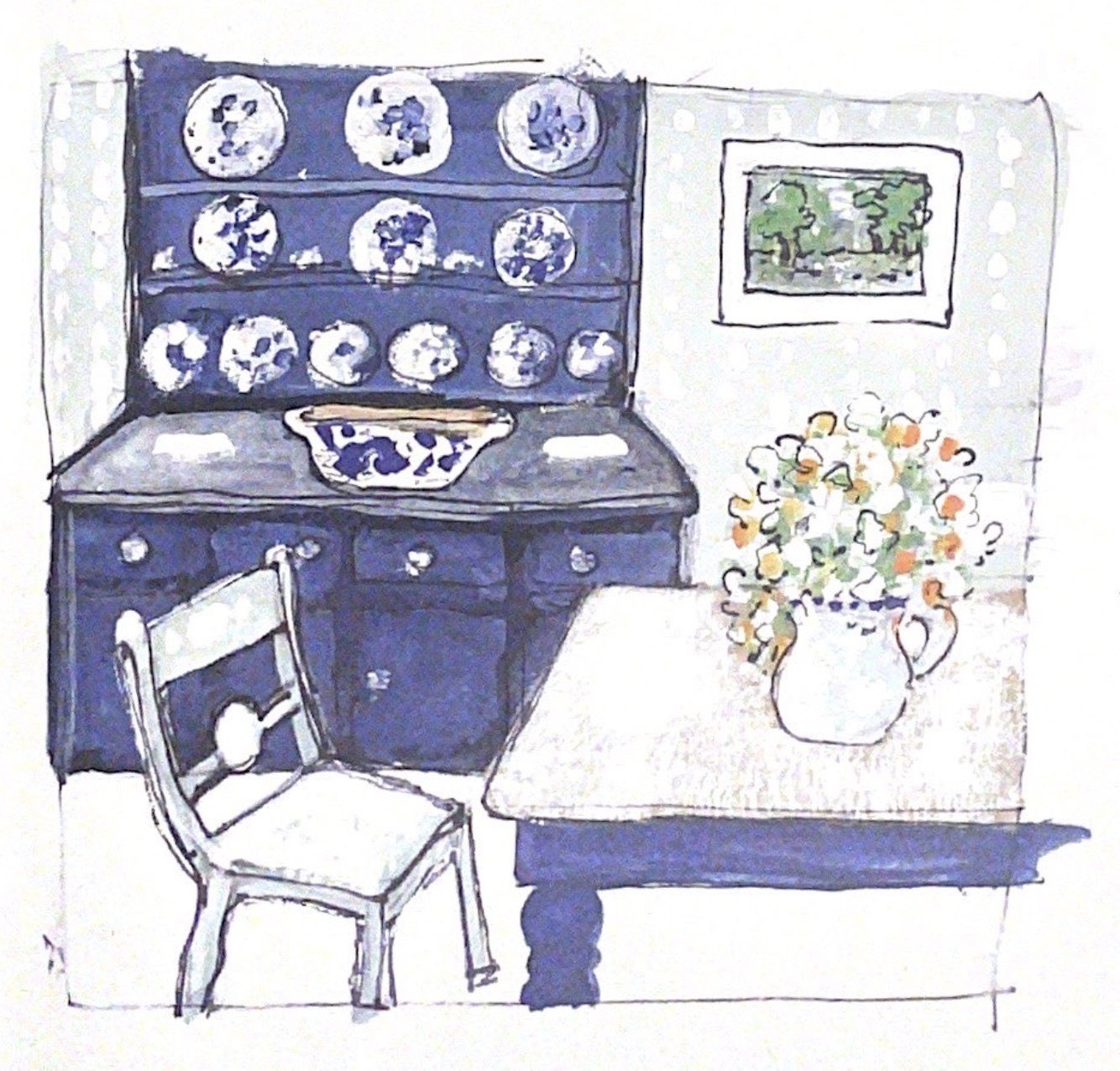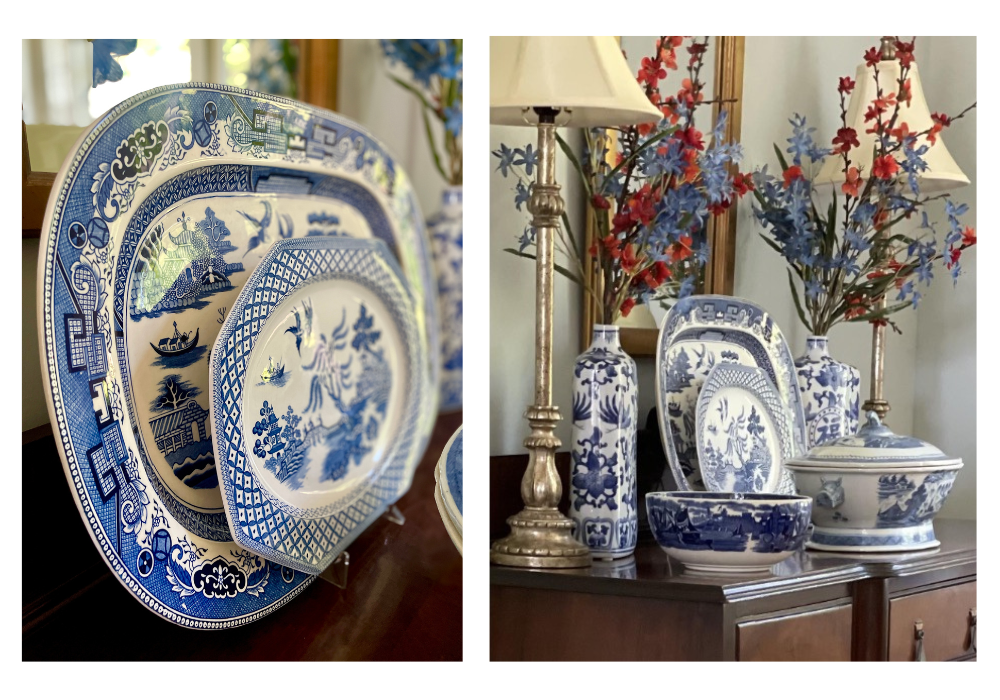Hello, it’s been quite a while since I have been able to blog. With the opening of our occasional shop, Le Bee Marché, we have been so busy!
Each month, we feature different themes and this month is one of my favorites, chinoiserie! Chinoiserie is a French word that means, “in the Chinese style,” pronounced Shin-WAH-zer-ee.
Chinoiserie refers to the European interpretation of East Asian traditions (décor, textiles, gardens, architecture, and more) and it dates back centuries. It was especially popular in the 1700s, and still is to this day, especially by lovers of timeless décor.
Some common elements of this style are the colors blue and white, lacquer, and gilding. Iconic pieces are ginger jars, wallpaper with Chinese motifs, and blue and white china. Perhaps the most recognizable chinoiserie pattern in china is the Blue Willow pattern, created in England in the late eighteenth century which depicts a centuries-old Chinese love story hidden within its design. Although the legend behind the design is English, Blue Willow is considered chinoiserie.
Now, let me share the legend with you. I promise, you’ll never see Blue Willow again without thinking of this tale.
The daughter of a Chinese emperor was betrothed to marry an older, wealthy merchant approved by her father. But she fell in love with a much younger, not-so-wealthy clerk under her father’s employ. Her father did not approve and built a fence around their home to keep the lovers apart. The daughter and the clerk managed to escape by crossing a bridge and eloping to an island across the sea. The star-crossed lovers lived in an island pagoda until their death at the hands of soldiers sent by the emperor. After their deaths, the gods pitied the lovers and immortalized them into a pair of doves that flew away to live forever in love.
Although the designs on the china seem like a run-of-the-mill pretty floral pattern, a closer look allows you to see the details that tell the story of the daughter and her lover. Here are the elements that must be present in the design to be considered a Blue Willow pattern:
- Willow trees
- Chinese pine trees
- A bridge
- A fence
- A boat
- A pagoda
- Two birds flying

By the 1980s, more than 400 pottery makers were producing Blue Willow pieces, so they are relatively easy to find and you may be able to score a great deal! Blue Willow pieces actually come in an array of different colors, including pink, green and brown. Today, we will focus on the widely-recognized blue and white pattern.
Blue and white is a classic color combination popularized in recent years, thanks to the Grandmillennial style movement. The rich, royal blue designs against the crisp, clean white background may seem too bold and intimidating to incorporate into your home. But fear not! Blue Willow china can easily find a place among your most-loved décor.
Consider adding even more shades and hues of blue around your Blue Willow pieces. In this image from Annie Sloan, you can see how the bold Oxford Navy cabinet and table plays off the gentle Svenska and Upstate Blue walls.

See how this sketch comes to life in Tuck’s kitchen! Tuck updated her kitchen cabinets with Annie Sloan Chalk Paint in Napoleonic Blue on the lower cabinets and Pure White Chalk Paint on the uppers. Eliminating the doors created open shelving which allows her Blue Willow collection to shine! The natural wood tones of the countertops go beautifully with the Blue Willow coloring and patterning. As you can see, mixing different shades of blue works quite well for a clean and beautiful look. Tuck’s Mackenzie-Childs Royal Check pieces are a perfect complement and demonstrate the joy of mixing the old with the new! Pattern mixing also adds visual interest without appearing too busy.

When purchasing Blue Willow pieces, look for interesting and unique borders around the edges. For example, the geometric border around the smaller platter breaks up the organic and scrolly border of the larger platter in the back. These differing textures and patterns create a visually interesting look in this display in Tuck’s dining room.
 Don’t be discouraged if you fall in love with a Blue Willow set that is missing a few plates or glasses. Since the patterns all follow a specific list of guidelines, even singular pieces bought separately will go together beautifully.
Don’t be discouraged if you fall in love with a Blue Willow set that is missing a few plates or glasses. Since the patterns all follow a specific list of guidelines, even singular pieces bought separately will go together beautifully.
The story behind Blue Willow china adds an extra layer of intrigue and beauty to the already-gorgeous patterning. The blue and white color palette may seem intimidating, but incorporating it into your home décor is easy whether adding a few dishes to a display cabinet or coordinating your entire kitchen around your collection.


Leave a comment